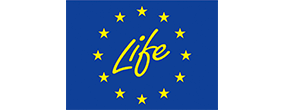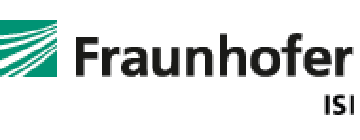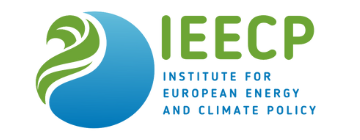Overview
In 2022, the final energy consumption in Portugal was 16.3 Mtoe, 5% lower than in 2000. The transport sector remained the largest energy consumer, accounting for 35.7% of the final energy consumption, followed by the industry sector with 27.5%, the residential sector with 18.8%, and the services sector with 14.9%. Between 2000 and 2022, energy consumption decreased by 28% in the industry sector, 33% in agriculture, and 3% in transport. In contrast, the residential and services sectors registered increases of 10% and 75%, respectively, in the same period of analysis.
Figure 1: Final energy consumption by sector (with climatic corrections)
Source: ODYSSEEThe technical energy efficiency index (ODEX) for final consumers in Portugal improved by 30% between 2000 and 2022, with an average annual improvement of 1.6%. The household sector achieved the highest energy efficiency gains, with a 40% improvement over the period, corresponding to an annual rate of 2.3%. The industry and transport sectors also recorded significant improvements of 33% and 28% respectively, translating into annual gains of 1.8% and 1.5%. In contrast, the services sector only registered a 2% improvement between 2000 and 2022, representing an almost negligible annual change of 0.1%.
Figure 2: Technical Energy Efficiency Index
Source: ODYSSEEPortugal’s energy transition is driven by three key cross-cutting measures: the Recovery and Resilience Plan (RRP), ECO.AP 2030, and the Energy Saving Plan (ESP) 2022-2023.
The RRP (2021-2026), established by Decree-Law n.º 29-B/2021, directs European funds to promote sustainable growth through structural reforms and investments, with expected savings of 3.18 TJ. It focuses on improving energy efficiency, promoting renewable energy, and reducing GHG emissions.
The ECO.AP 2030 program targets the Public Administration, aiming to become a leader in resource efficiency, targeting a 40% reduction in primary energy consumption, a 10% share of self-energy production from renewable energy and, a 20% reduction in water and material usage by 2030. It also aims to achieve an energy renewal rate of 5% in public buildings, contributing 0.64 TJ in savings.
The ESP 2022-2023 responds to Europe’s gas crisis caused by Russia’s invasion of Ukraine. Approved by the Resolution of the Council of Ministers (RCM) 82/2022, it aims to reduce natural gas consumption by 15% between August 2022 and March 2023, delivering savings of 1.91 TJ. Together, these measures strengthen Portugal’s efforts to improve energy security, promote sustainability, and achieve its national and EU decarbonization targets
Table 1: Sample of cross-cutting measures
| Measures | NECP measures | Description | Expected savings, impact evaluation | More information available |
|---|---|---|---|---|
| The Portuguese Recovery and Resilience Plan (RRP) | Yes | Decree Law (DL) n.º 29-B/2021, 4th of May, establishes the governance model to manage the European funds allocated to Portugal through the Recovery and Resilience Plan (RRP), under the Recovery and Resilience Mechanism of the European Union for the period 2021-2026. | 3.18 TJ | Link |
| Resource Efficiency Program in Public Administration (ECO.AP 2030) | Yes | ECO.AP 2030, aims at placing the Public Administration at the forefront of efficiency, as the model in the adoption of measures to improve efficiency regarding energy, water and other resources, establishing a set of objectives and goals that contribute to the decarbonization and energy transition of the public administration activities. | 0.64 TJ | Link |
| Energy Saving Plan (ESP) 2022-2023 | Yes | The European Commission launched the REPowerEU initiative and the "Save Gas for a Safe Winter" Regulation to deal with the energy crisis prompt by the Russian invasion on Ukraine. Reliance on fossil fuels needs to be reduced, which requires an accelerated energy transition and a reduction in energy consumption, especially natural gas. The Commission proposed the creation of National Energy Saving Plans and the Portuguese Energy Saving Plan (ESP) 2022-2023 was approved by the Resolution of the Council of Ministers (RCM) 82/2022 of 27th September, in response to the European Commission's challenge to reduce gas consumption by 15% between August 2022 and March 2023. | 1.91 TJ | Link |
Buildings
In 2022, Portugal’s residential sector accounted for 18.8% of the total energy consumption (3.1 Mtoe). Space heating consumption per m² (adjusted for climate) was 3.1 koe/m², representing a 24.6% increase since 2000, (1%/year on average), with however significant fluctuations: a 2.4% drop from 2020 to 2021, followed by a 12.6% increase in 2022. Cooking remained the highest energy use per dwelling (0.22 toe/dw), decreasing by 34% since 2000 (-1.9%/year) and representing 45% of household consumption in 2022. Domestic hot water use dropped by 28% (1.5%/year) to 0.12 toe/dw, while electrical appliances and lighting increased by 19% (0.8%/year), reaching 0.14 toe/dw and rising to 30% of household energy use. Space cooling remained marginal at 0.01 toe/dw but registered a 54% increase since 2000, driven by demand between 2019 and 2021. Overall, energy consumption trends reflect efficiency improvements and changing household energy needs.
Figure 3: Energy consumption of household space heating per m2 (with climatic corrections)
Source: ODYSSEE; ambient heat included.Figure 4: Energy consumption per dwelling by end-use (except space heating)
Source: ODYSSEEIn 2022, the final energy consumption in the residential sector increased by 0.15 Mtoe (5%) compared to 2000, reaching 2.96 Mtoe. This increase is primarily driven by the rise in the number of dwellings (+0.64 Mtoe), bigger homes (+0.09 Mtoe), and other factors (+1.2 Mtoe); these other factors combine the increased use of ambient heat from heat pumps (+0.3 Mtoe) and behavioural effects linked to better heating comfort (0.9 Mtoe). Energy savings (-1.39 Mtoe) and the impact of climatic conditions (-0.19 Mtoe) contributed to a reduction in energy consumption but were insufficient to offset the overall rise in the energy demand within the sector.
Figure 5: Main drivers of the energy consumption variation in households
Source: ODYSSEE; ambient heat included.Based on the 2022 data, the final energy consumption per employee in the services sector increased by 34% compared to 2000, reaching 0.71 toe/emp. This represents an average annual growth of 1.3%. The rise reflects the sector's expansion and higher energy use per employee over the period analysed. Between 2021 and 2022, energy consumption per employee increased by 8.0%, following two consecutive years of decline. Regarding electricity consumption per employee in the services sector, there was a 13% increase compared to 2000, reaching 4,819 kWh/emp in 2022, with an average annual growth rate of 0.5%. Between 2021 and 2022, the electricity consumption per employee registered a significant rise of 9.1%, following reductions of -6.1% and -5.2% in the two preceding years.
Figure 6: Energy and electricity consumption per employee in services (with climatic corrections)
Source: ODYSSEEThe Financial Instrument for Urban Rehabilitation and Revitalization (IFRRU 2020) was established by the Council of Ministers Resolution (RCM) no. 84-O/2016 on the 30th of December, with the goal of consolidating various funding sources to support urban rehabilitation across Portugal. IFRRU 2020 serves as a financial instrument to facilitate investments in urban renewal throughout the country. To stimulate investment, IFRRU 2020 combines European funds from PORTUGAL 2020, funds from entities like the European Investment Bank and the Development Bank of the Council of Europe, along with commercial banking funds. The process for funding is streamlined, requiring a single application without restrictions on the entity seeking financing or the future use of the renovated building. Applications can be submitted to selected banks through their commercial network at any time, without specific application periods or limits on the number of applications per candidate. IFRRU 2020 has a financing capacity of 1.4 billion euros, generating an estimated investment of around 2 billion euros. Its objective is to enhance the sustainability of cities, enhance inhabitants’ quality of life, and create new opportunities for economic and social development in urban centers.
Table 2: Sample of policies and measures implemented in the building sector
| Measures | NECP measures | Description | Expected savings, impact evaluation | More information available |
|---|---|---|---|---|
| Financial Instrument for Urban Rehabilitation and Revitalization (IFRRU 2020) | Yes | This program combines different financial sources and creates one main instrument that provides funds for renovation measures and supports easy-to-access conditions. There are no restrictions related to the nature of the entity requesting the financing or the future use of the renewed building. The measure also aims at improving the cities' sustainability, the social development in urban centres. | 0.13 TJ | Link |
Transport
In 2022, the transport sector accounted for 35% of the total final energy consumption (5.81 Mtoe), being road transport responsible for 95% of this consumption. Cars represented 56.1% of the total energy consumption, increasing from 48% in 2000. The transport of goods, including trucks and light vehicles, accounted for 35%, registering a decrease from 44.1% in 2000. Buses represented 3%, and motorcycles accounted for 1.3% of the total. Rail transport, inland waterways, and domestic air transport together consumed the remaining 5% of consumption within the transport sector.
Figure 7: Transport energy consumption by mode
Source: ODYSSEEIn 2022, cars remained the dominant mode of inland passenger transport, accounting for 88% of total passenger traffic, a significant increase from 81% in 2000. Public transport modes saw contrasting trends, with buses representing 7%, down from 14% in 2000, while trains maintained a consistent share of 5%. Between 2000 and 2022, passenger traffic by cars grew by 46%, with an annual increase of 1.7%. In the same period, bus traffic declined by 30%, with an annual decrease of 1.6%, while train traffic increased by 19%, growing annually by 0.8%. From 2021 to 2022, all modes rebounded after previous declines. Car traffic rose by 14.5%, bus traffic surged by 45.7%, and train traffic experienced the highest growth at 51.8%.
Figure 8: Modal split of inland passenger traffic
Source: ODYSSEEThe overall freight traffic registered a slight increase of 1% between 2000 and 2022, with total freight traffic reaching 17.8 Gtkm. In 2022, road transport continued to dominate freight traffic, accounting for 88% of the total, maintaining the same share as in 2000. Rail transport represented 12%, with no significant changes in its share since 2000.
Figure 9: Modal split of inland freight traffic
Source: ODYSSEESince 2000, the energy consumption in the transport sector decreased by 0.18 Mtoe, dropping from 6 Mtoe to 5.82 Mtoe. This reduction is mainly attributed to energy savings, which contributed to a decrease of 2.14 Mtoe. However, the effect of increased traffic (“activity”) has led to a rise in energy consumption by 1.14 Mtoe, while the impact of the higher share of road transport (“modal shift”) added 0.41 Mtoe and other factors contributed to an additional 0.4 Mtoe, partially compensating the savings achieved through technology improvements.
Figure 10: Main drivers of the energy consumption variation in transport
Source: ODYSSEEThe ECO.mob program, approved by Ministries Council Resolution nº 54/2015, promotes sustainable mobility within Portugal’s Public Administration by reducing CO2 emissions, modernising the State Vehicle Fleet, and replacing combustion vehicles with electric ones. The program focuses on mobility management, fleet modernisation, and encouraging sustainable behaviours. The Implementation and Use of Intelligent Transportation Systems measure, established by Law nº 32/2013, aims to enhance road transportation by using information technologies for better traffic management, road safety, and services like real-time traffic data, multimodal trip planning, and EU-level emergency calls. The Environmental Fund supports environmental policies to achieve sustainable development and contribute to climate change, water, waste, and biodiversity objectives.
Table 3: Sample of policies and measures implemented in the transport sector
| Measures | NECP measures | Description | Expected savings, impact evaluation | More information available |
|---|---|---|---|---|
| ECO.mob: Sustainable Mobility Program for Public Administration | Yes | Approved by Ministries Council Resolution nº 54/2015, ECO.mob promotes sustainable mobility in Portugal’s Public Administration by reducing CO2 emissions, improving the State Vehicle Fleet, and replacing combustion vehicles with electric ones. The program focuses on mobility management, fleet modernization, and promoting sustainable behaviours. | 0.69 TJ | Link |
| Implementation and use of intelligent transportation systems | No | Approved by Law nº 32/2013, which transposed Directive 2010/40/EC, this measure promotes the use of information technologies in road transportation to enhance traffic management, road safety, and user services, such as real-time traffic information, multimodal trip planning, and EU-level emergency calls. | 0.23 TJ | Link |
| Environmental Fund | Yes | Environmental Fund constitutes a financial instrument that aims to support environmental policies for the pursuit of sustainable development objectives, contributing to the fulfillment of national and international objectives and commitments, namely those related to climate change, water resources, waste and the conservation of nature and biodiversity, financing entities, activities or projects. | Link |
Industry
In 2022, the industry sector accounted for 27.5% of the total final energy consumption, amounting to 4.48 Mtoe. Since 2000, industrial energy consumption has decreased significantly by 1.72 Mtoe (-28%), with an annual reduction rate of -1.5%. The paper, pulp, and printing industry sectors represented 30% of the industrial energy consumption in 2022, showing a growth of 7% compared to 2000. Despite this long-term increase, recent fluctuations were observed, with a variation of 1.8% between 2021 and 2022. The non-metallic minerals industry accounted for 24% of the industrial energy consumption in 2022, experiencing the largest decline since 2000, with a reduction of 52% (-3.2% annually). The chemical industry represented 9% of the total, with a slight growth of 1% over the same period, while the steel industry and non-ferrous metals industry contributed 4% and 1%, respectively. The steel industry registered an 11% decrease since 2000, while the non-ferrous metals industry declined by 27%. Other branches of industry accounted for 33% of consumption in 2022, decreasing by 32% since 2000. Overall, industrial energy consumption in 2022 decreased by -0.7% compared to the previous year, continuing the downward trend seen over the past two decades.
Figure 11: Final energy consumption of industry by branch
Source: ODYSSEEIn energy-intensive industries, the cement industry registered an increase of 39% in energy consumption per produced unit between 2000 and 2022 (+ 1.5%/year on average). However, this unit consumption has decreased since its peak in 2017, with a slight increase of 1.7% observed between 2021 and 2022. In contrast, the steel and paper production industries have been steadily reducing their unit energy consumption since 2000. By 2022, the unit energy consumption of crude steel decreased by 65% (-4.6% annually), while the paper industry registered a 35% reduction (-1.9% annually). Between 2021 and 2022, crude steel consumption per unit decreased by 7.3%, while the paper industry experienced a smaller reduction of 0.9%.
Figure 12: Unit consumption of energy‐intensive products (toe/t)
Source: ODYSSEEThe reduction in energy consumption in the industrial sector since 2000, by 1.77 Mtoe, from 6.24 Mtoe to 4.47 Mtoe in 2022, is mainly attributed to energy savings achieved through the adoption of more efficient technologies (-2.2 Mtoe) and a decline in industrial activity (-2.3 Mtoe). On the other hand, structural changes to more energy-intensive branches contributed to an increase of 1.88 Mtoe, while other effects added 0.85 Mtoe.
Figure 13: Main drivers of the energy consumption variation in industry
Source: ODYSSEEThe Energy Intensive Consumption Management System (EICMS), which replaced the previous Regulation on Energy Consumption Management in the industry sector, established a system for managing and monitoring energy consumption for companies and installations with intensive energy consumption (above 500 toe/year). Under this mandatory regulation, the definition of energy-intensive installations has been extended to non-SMEs, expanding the scope of the previous regulation.
Table 4: Sample of policies and measures implemented in the industry sector
| Measures | NECP measures | Description | Expected savings, impact evaluation | More information available |
|---|---|---|---|---|
| Intensive Energy Consumption Management System (EICMS) | Yes | Promote the increase of energy efficiency through the modification of production processes, the introduction of new technologies and the behaviours changes. The EICMS applies for all companies and facilities (also named “Operators”) that have an annual consumption over 500 toe/year, imposing binding energy audits, with a 8-year periodicity. |





